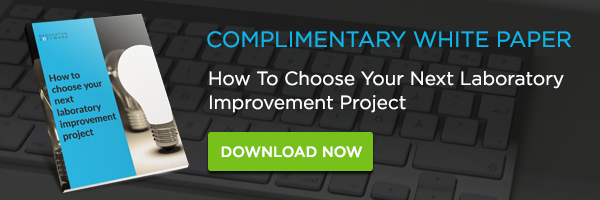
Most people cringe when they hear the word LIMS project, but why did it get such a bad reputation? It’s because most people who have experienced a LIMS project haven’t had a good experience. The most common complaints are that the project ran over schedule and over budget.
For those of you who would like to deploy LIMS into your laboratory, don’t become discouraged by the horror stories. Here are five key tips to help keep you on track and ensure that you have a positive and successful LIMS deployment.
Tip # 1: Start Small
No one knows what they want until they start using something. Therefore, ‘starting small’ is a big win for your LIMS deployment project. Many laboratories don’t want the perceived disruption that can come with a LIMS deployment, and this is completely understandable. Your team faces a difficult challenge to balance time between routine operations and the LIMS project. The temptation is to automate all of your laboratory processes within the same project; however, greater disruption is most likely to occur when teams tackle a larger change process than what is necessary to achieve the benefits. To divert from disruptions, focus on the critical path of your process. This means, determining the minimum steps which are required to achieve your output.
Once you have deployed LIMS to cover your critical path, introducing LIMS to other complementary laboratory processes such as stock management or equipment integration should be a smooth transition. Your project team will have the knowledge of lessons learned from the initial deployment, and you will have a working system to provide a visual indication of how your complementary processes will interact.
Tip # 2: Define Success Criteria
The best way to know when a project is complete is to understand what makes the project complete. This is called success criteria. The project can have success criteria at multiple levels, and it depends on the scale and impact of your project as to how detailed this will be. For example, a highly regulated pharmaceutical laboratory must comply with regulations regarding the use of computer systems. Therefore, their success criteria would be defined as user requirements and how these are met by the functionality of the system. Whereas, a petrochemical laboratory in a less regulated industry may have concerns with return on investment figures such as time and cost savings evident post-project completion.
Having set goals with defined success criteria will set you out on the right path for successful project execution. Defining success criteria will give the project purpose and direction, and will also help in guiding you to making the right decisions for your laboratory if challenges emerge throughout the project.
Tip # 3: Dedication and Responsibility
When managed effectively, a LIMS deployment project is a great opportunity to bring the team together and reinforce positive morale and culture. A LIMS project requires dedication from the project team to make it a success. A LIMS has such a large influence on laboratory operations, and therefore, the proportional amount of time required to deploy a LIMS should not be underestimated.
Once the time required to dedicate to the project is recognised, it is important to assign responsibility across team members. When each team member understands their role and where they contribute to the project, the project manager can allocate workload and manage progress more effectively. It is important to be aware of bottlenecks, and if these begin to occur in your project, you may wish to look at reassigning responsibilities.
Tip # 4: Keep a Rhythm
Everyone enjoys music when the song has a good beat, and likewise, projects are more enjoyable when they have rhythm as well. Create a project schedule with contingency, to outline deliverables and due dates that are shared between the project team and stakeholders. Also, make sure you hold regular project meetings to:
-
update on progress
-
discuss any blockers or bottlenecks
-
and agree solutions to move positively towards your goals
Undoubtedly, team members will have holiday or time off work which may overlap with scheduled project meetings. If this is the case, don’t just reschedule the meeting for when they return. This will cause the project to lose rhythm and momentum. Instead, why not ask them to create a summary before they leave and delegate this to a fellow team member to inform everyone during the meeting?
Tip # 5: Welcome Flexibility for Change
By the time most projects reach completion, the original scope, objectives and goals will have changed. This is OK, and it can be good to welcome change. In fact, projects tend to have a higher success rate with positive team morale where flexibility is a key principle of delivery. Changes will be required to deliver what is best practice for your laboratory. Therefore, creating an easy to use change management practice for your LIMS project will allow you to respond quickly, having the least impact on schedule and budget.






